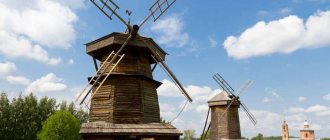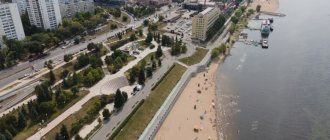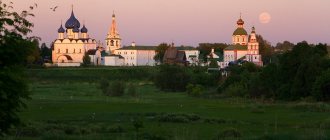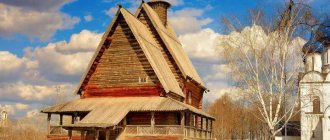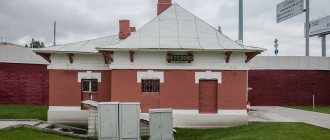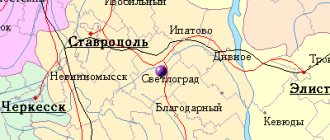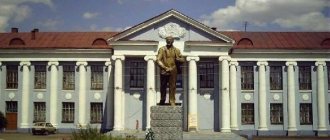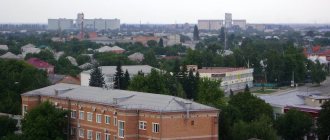Suzdal Kremlin
Suzdal Kremlin
Vladimir region
The Suzdal Kremlin was built in the 11th–12th centuries to protect the city from enemies from the east, south and west. On the northern side of Suzdal, the enemy’s path was blocked by the Kamenka River. The Kremlin was surrounded by earthen ramparts more than a kilometer long; gates, towers and log walls were built on them. The ruins of ramparts and ditches have survived to this day.
The most ancient building of the Suzdal Kremlin is the Cathedral of the Nativity of the Virgin. It was built in the 13th century under Prince George Vsevolodovich. In the 17th century, stone buildings of the Bishops' Chambers were erected in the center of the main square of the Kremlin, which included residential and utility buildings. Until the end of the 18th century, the Suzdal Kremlin served as the residence of the Vladimir-Suzdal bishops. Today it is a museum complex, a monument of ancient Russian art and architecture.
Holidays in the city of Suzdal
Suzdal carefully preserves its customs and is famous for its traditional holidays, which take place annually in the city center on the main square. These are always grandiose and unforgettable events that remain in memory for a lifetime.
City guests and local residents take part in the following holidays: Cucumber Day, Shiroka Maslenitsa, Ivan Kupala Festival, Rusal Week. Find out about the main holiday City Day in Suzdal.
Every year the city hosts Christmas and Maslenitsa festivities, all kinds of festivals and fairs. Usually the holidays take place on the Trade Square, in the Main Tourist Complex and in the MBUK “Center for Culture and Leisure of the City of Suzdal.”
Wooden crafts (boxes, nesting dolls, painted spoons) made by local craftsmen are sold as souvenirs during the holidays.
Have you ever tried cucumber jam? This can only be done in Suzdal. It is incredibly tasty! You will be offered to try it at any fair, since all residents of the city grow cucumbers without exception.
Spaso-Evfimiev Monastery
Spaso-Evfimiev Monastery in Suzdal, Vladimirskaya…
Vladimir region
The monastery on the high bank of the Kamenka River was founded by Suzdal and Nizhny Novgorod prince Boris Konstantinovich in 1352. When the first abbot of the monastery, Evfimiy, was canonized as an all-Russian saint, the monastery received the name Spaso-Evfimiev. In the 17th century, the wooden monastery buildings burned down during the Polish-Lithuanian invasion, after which the monastery began to acquire powerful defensive towers. By the end of the 17th century, the Spaso-Evfimiev Monastery was one of the largest in Russia.
In 1766, by decision of Catherine II, a prison for political and mentally ill prisoners was established in the monastery. In the 20th century, a political detention center was located here, and then a testing and filtration camp, through which more than 8 thousand people passed. Until the 1960s, there was an educational and labor colony for juvenile delinquents on the territory of the monastery. Only in 1968 the Spaso-Evfimiev Monastery became a museum. Today it is part of the Vladimir-Suzdal Museum-Reserve, and its exhibitions introduce the history and culture of the Suzdal land.
Message about the city
If there is the most beautiful city on the planet, it is Suzdal. A city-museum, a city-reserve, a city of Orthodox churches.
Suzdal was first mentioned in The Tale of Bygone Years. Its name is believed to come from the word “to create.” However, historians are still arguing about this.
Suzdal is located in the Vladimir region. It stands on the Kamenka River. According to archaeologists, the city is more than a thousand years old. Archaeological excavations were carried out in a bend of the river, where the ruins of defensive structures were found. At first it was a small settlement of the ancient Slavs. When Prince Yuri Dolgoruky came to power, the settlement became the center of the Rostov-Suzdal Principality.
Then the capital was moved to Vladimir, but Suzdal continued to remain the center of first the independent Suzdal principality, and then the Suzdal-Nizhny Novgorod principality.
Throughout its existence, the city suffered many battles. The Volga Bulgars fought for it; during the Tatar-Mongol invasion, Moscow Prince Vasily III was captured here and the enemies completely plundered the city. The city was besieged by Polish invaders. Crimean Tatars raided Suzdal. The city emerged victorious from all battles. Suzdal began to be considered a district town only in 1778.
Being in the center of trade routes, Suzdal began to develop rapidly. Goods from Moscow to Arkhangelsk and St. Petersburg passed through the city. Until the end of the 19th century, it was rightly considered the capital of the ofeni (street vendors).
Since the 16th century, churches and monasteries have been constantly being built in Suzdal. Separate monasteries began to be united into large monastic complexes. So Suzdal became the religious center of Russia. During Soviet times, many churches were destroyed, but what remained was restored and renovated, and now the domes of Orthodox churches are shining again, and the sound of church bells is constantly heard over the city.
Suzdal is one of the cities of the Golden Ring of Russia. There is not a single industrial enterprise here. Tourists come here not only from Russia, but from many countries around the world. They admire ancient churches and take photographs for memory. In 1974, the city was awarded the “Badge of Honor” for preserving its original culture and developing tourism.
There are a lot of attractions in Suzdal. One of them is the ancient Suzdal Kremlin. The surprising thing is that the Kremlin has no walls. However, not a single tourist passes by this monument of ancient architecture. Many films were shot in Suzdal. Andrei Tarkovsky filmed the famous film “Andrei Rublev” here. The film “Finist – the Clear Falcon”, the television series “The Brothers Karamazov” and many other films were shot here. There is also a “Wax Museum” here. It is not very big, but very informative. In addition to historical figures, there is an exhibition about executions and torture in Rus'. Warning Suzdal residents ask children and very impressionable people not to attend this exhibition.
Suzdal is a glorious page in the history of the Russian state. An ancient city that you can’t help but fall in love with.
Museum of Wooden Architecture
Museum of Wooden Architecture in Suzdal
Suzdal district
The Museum of Wooden Architecture and Peasant Life is a complex of architectural monuments in the open air. The museum's exposition reproduces a small village with huts, churches, outbuildings and windmills of the 17th–19th centuries, which were brought here from different parts of the Vladimir region.
Two temples, built without a single nail, rise above the recreated village. Here you can see the hut of a simple farm laborer, a wealthy peasant and a merchant. The interiors of the huts contain samovars and furniture, dishes and toys, wooden spinning wheels and looms.
Creation and collapse of the Suzdal-Nizhny Novgorod principality
Under the new conditions of Russian historical life, Moscow is gradually rising and strengthening. The princes strive to unite the lands around Moscow and gather forces to fight the hated yoke. This process was long, complex and controversial. Moscow's policy was especially hampered by the resistance of the Tver and Suzdal princes.
In the middle of the 14th century, the Suzdal prince Konstantin Vasilyevich founded the Suzdal-Nizhny Novgorod principality, which had a fairly vast territory. Since Suzdal was devastated by a pestilence, the prince moved the capital to Nizhny Novgorod, away from Moscow. “He reigned honestly and menacingly, protecting his homeland from strong princes and Tatars,” it is said about him in one of the old books.
His son Dmitry Konstantinovich for a short time received from Khan Navruea a label for the grand-ducal throne, but then was forced to cede it to his Moscow rival-namesake Dmitry Ivanovich, the future Dmitry Donskoy. He gave him his daughter Evdokia as his wife.
In 1392, the Suzdal-Nizhny Novgorod principality disintegrated. It was annexed to Moscow. And soon Suzdal finally lost its political significance.
The Suzdal-Nizhny Novgorod principality left behind a very valuable memory: the Pokrovsky (1364) and Spaso-Evfimievsky (1352) monasteries, as well as the Laurentian Chronicle, which was compiled by order of the Suzdal-Nizhny Novgorod Bishop Dionysius in 1377. Nowadays this valuable source of information on the historical past of Suzdal is stored in the State Public Library named after. Saltykov-Shchedrin in Leningrad.
Temple of the Resurrection of the Word from Patakino in the Museum of Wooden Architecture
Temple of the Resurrection of the Word from Patakino in the Museum of Wooden…
Vladimir region
The Church of the Resurrection of the Word was brought to the Museum of Wooden Architecture from the village of Patakino. The church was erected in 1776, it was consecrated in honor of the Resurrection of Christ. At that time, the temple belonged to the landowner Ivan Akinfov. For a long time, the wooden church served as a cemetery church, which was assigned to the Trinity Stone Church in the village of Patakino.
The structure has the architectural shape of a ship - the altar, bell tower and western porch of the church are built along the same axis. The Church of the Resurrection of the Word became an exhibit of the Museum of Wooden Architecture in 1969–1970. Its restoration was carried out by the architect Valery Anisimov.
History of the emergence of Suzdal land
The Suzdal land was first mentioned in chronicles and ancient books under the year 498 (990). How, in the Degree Book on the Baptism of Rus' it says: “In the summer of 6498, blessed Vladimir moved from Kiev to the land of Suzhdal, taking with him two Bishops... and in the land of Suzhdal all the people were baptized.”
The spread of Christianity was accompanied by the fight against paganism, crowned by the strengthening of feudal oppression in the ancient Russian state, which was most noticeably reflected on the lower classes and raised them to fight. Thus, in Rostov the Great, the first bishop Leonty, sent there from Kyiv as a representative of spiritual authority by Prince Vladimir, was killed. In 1024, an uprising of Smerd farmers broke out in Rostov and Suzdal, inspired by pagan preachers - the Magi. The latter took advantage of the fact that famine had been raging in the area for several years, caused by a bad harvest, and called for reprisals against rich people who, according to them, were hiding reserves of bread.
The Laurentian Chronicle, talking about this tragedy, emphasizes that “there was no great rebellion,” rumors about it reached Yaroslav the Wise, alarmed him, he arrived in Suzdal with a squad and suppressed the uprising in the most brutal way.
At the end of the 11th century, a feudal war broke out between the sons of the Kyiv prince Vladimir Monomakh, Izyaslav and Mstislav, and the Chernigov prince Oleg. During it, Izyaslav was killed near Murom, and Oleg, retreating under the onslaught of Mstislav, burned Suzdal in 1096. “Only the monastery courtyard of the Pechersk Monastery and the church there is Dimi-trea,” the chronicle testifies. They survived because they were located far from the Kremlin, on the opposite bank of the Kamenka.
Suzdal as a religious center
Before the final subjugation to Moscow, Suzdal was a populous and wealthy city, and its inhabitants, as the chronicle puts it, were famous for their “leisure in arts and crafts.” Having become an ordinary “zamoskovny” town in the state and being far from the busy trade routes of that time, Suzdal fell into decline in terms of trade and crafts. But it began to flourish as a religious pilgrimage. The “relics” of the founder and first abbot of the Spassky Monastery, Euthymius, and the Suzdal bishops Fyodor the Greek and John are recovered: the church canonizes them as saints. In the 16th century, the Suzdal diocese was declared an archbishopric.
The economic well-being of the Suzdal church begins to be actively expressed primarily in architecture. The Pokrovsky and Spaso-Evfimievsky monasteries are replacing all main buildings from wood to stone. The Cathedral of the Robe is being built in the monastery of the same name. By order and with the money of Vasily Ioannovich III, the Nativity Cathedral in the Kremlin was renovated in 1528-30. Numerous churches receive precious contributions from Moscow and local nobility.


